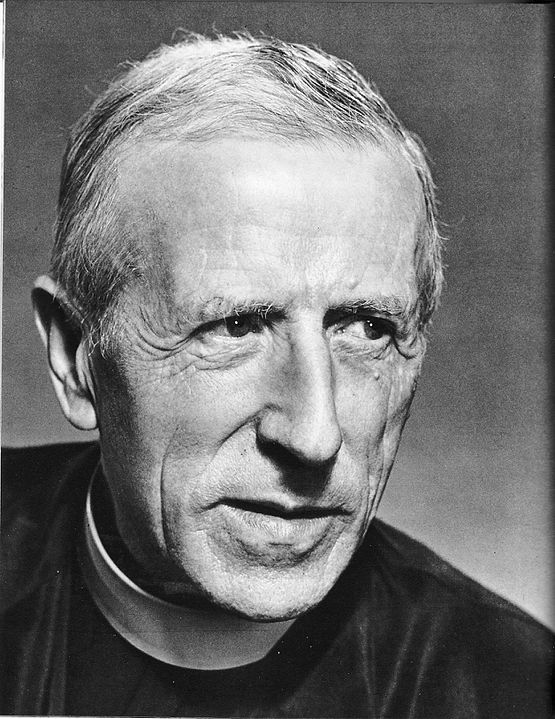A Summary of the discussion and insights.
Introduction
Pierre Teilhard de Chardin was born near Clermont Ferrand, France in 1881. His father served as a regional librarian and was a keen naturalist. He collected rocks, insects and plants and encouraged nature studies in the family. Teilhard’s spirituality was awakened by his mother. In 1899, he entered the Jesuit novitiate in Aix en Provence. In 1901, he made his first vows. Teilhard continued his philosophical studies in Jersey until 1905. Strong in Science subjects, he was sent to teach physics in Cairo, Egypt.
From 1912 to 1914, Teilhard worked in the field of palaeontology in the museum of Natural History, France. In the first world war he served as a stretcher bearer, and was decorated for valour. He later wrote: “…the war was a meeting … with the Absolute.” In 1916, he wrote his first essay, Cosmic Life, where he considered his scientific and philosophical thought was revealed as his mystical life. While on leave from the military he pronounced his solemn vows as a Jesuit. In 1919, he wrote The Spiritual Power of Matter, and became an assistant professor at the Catholic Institute of Paris.
For the next 2 decades or more, he travelled widely, particularly throughout Asia. During all these years, Teilhard contributed considerably to an international network of research in human palaeontology, and wrote The Divine Milieu and The Phenomenon of Man. These works, together with other writings, were not accepted by the Jesuit authorities in Rome, and he was forbidden to write and teach his work.
Teilhard was convinced that human spiritual development is moved by the same universal laws as material development. He wrote, “…everything is the sum of the past” and “…nothing is comprehensible except through its history. ‘Nature’ is the equivalent of ‘becoming’. There is nothing, not even the human soul, the highest spiritual manifestation we know of, that does not come within this universal law.”
The Divine Milieu
This is an expression which tries to capture the meaning of two different experiences. On the one hand, it refers to an entire environment; on the other hand, it means at the same time a central point, a centre where all realities come together, meet and converge. The divine presence in the world is this mysterious ‘milieu’, radiating throughout all levels of the universe, through matter, life and human experience. We are immersed in this milieu, in which our soul may be swept away and divinised. All realities, all experiences, all our activities, all our joys and suffering, have this potential for divinisation, for being set on fire through the outpouring of divine love.
The Phenomenon of Man
The Phenomenon of Man represents Teilhard’s attempt at reconciling his religious faith with his academic interests as a palaeontologist. It gives an account of the unfolding of the cosmos and the evolution of matter to humanity, to ultimately a reunion with Christ. In the book, Teilhard abandoned literal interpretations of creation in the Book of Genesis in favour of allegorical and theological interpretations. The unfolding of the material cosmos is described from primordial particles to the development of life, human beings and the ‘noosphere’ and finally to his vision of the ‘Omega Point’ in the future, which is “pulling” all creation towards it.
The Noosphere and the Omega Point
For Teilhard, the noosphere is the sphere of thought encircling the earth that has emerged through evolution as a consequence of its growth in complexity/consciousness. The noosphere is therefore as much part of nature as the atmosphere, biosphere and geosphere. Social phenomena are part of the noosphere and include, for example, legal, educational, religious, research, industrial and technological systems. In this sense, the noosphere is constituted by the interaction of human minds. The noosphere thus grows in step with the organization of the human mass in relation to itself as it populates the earth. He saw the Christian notion of love as being the principal driver of “noogenesis”, the evolution of mind. Evolution would culminate in the Omega Point — an apex of thought/consciousness—which he identified with the return of Christ on the ‘last day’, or ‘day of judgment’.
Christianity as his Primary Faith
Teilhard’s faith was thoroughly incarnational and Christocentric. He described Christ as a ‘universal element’ present everywhere through God’s creative action, and the ‘soul of the world’. He was a great supporter of ecumenical and interfaith ideas, whilst always emphasising the transformative power of the Christian faith. Teilhard recognized the importance of bringing the Church into the modern world, and approached evolution as a way of providing a rational meaning for Christianity, particularly creation theology. For Teilhard, evolution was “the natural landscape where the history of salvation is situated.”
Bob Morley
